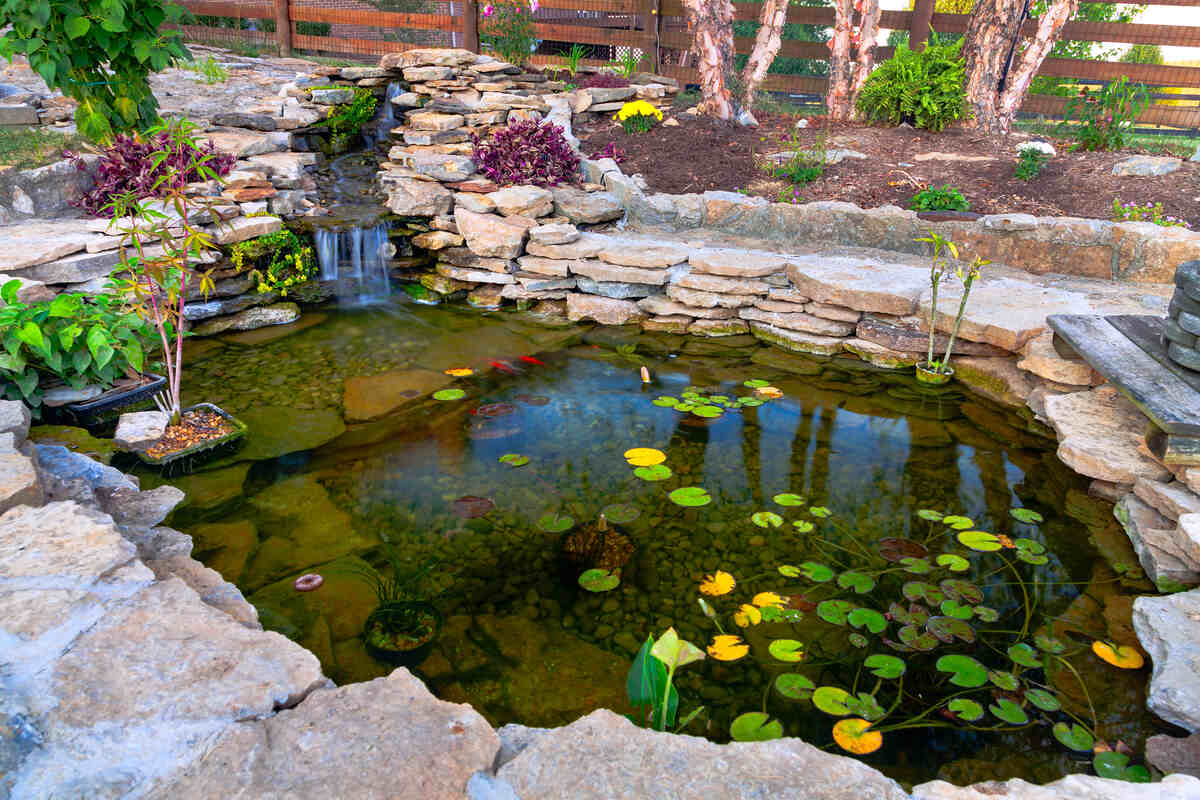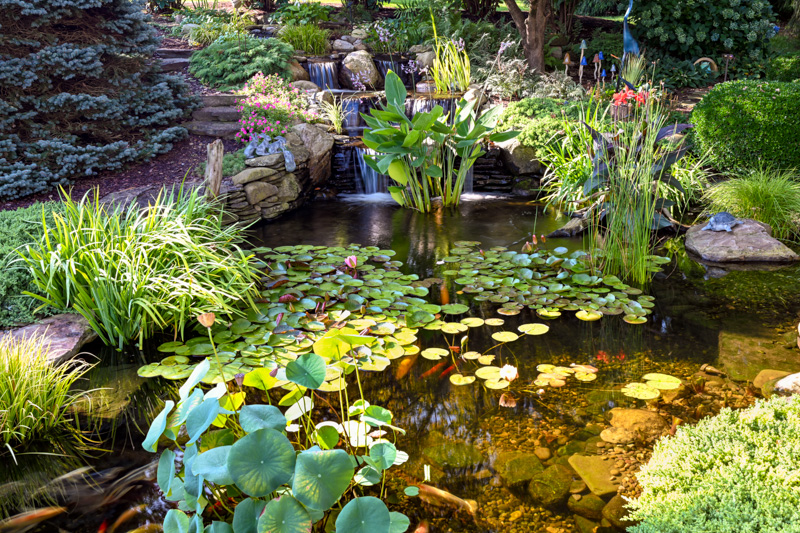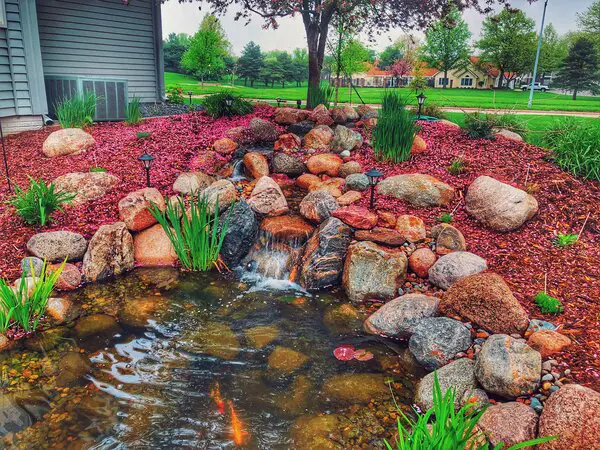Keeping a koi pond clean is essential for the health and well-being of your fish. A clean pond not only ensures that your koi thrive but also enhances the overall beauty of your outdoor space. In this guide, we will discuss effective ways to maintain a clean and healthy environment for your koi.

Credit: www.lawnstarter.com
1. Install a Proper Filtration System
One of the most important steps in keeping your koi pond clean is to install a high-quality filtration system. A good filtration system will help remove debris, waste, and other contaminants from the water, keeping it clear and healthy for your fish. There are several types of filtration systems available, including mechanical, biological, and UV filters. It’s essential to choose the right combination of filters based on the size of your pond and the number of koi you have.
2. Regular Water Testing
Regular water testing is crucial for maintaining optimal water quality in your koi pond. Test the water for pH levels, ammonia, nitrites, and nitrates on a regular basis to ensure that the parameters are within the ideal range for koi. High levels of ammonia or nitrites can be harmful to your fish and may indicate a problem with your filtration system or overfeeding. Make adjustments as needed to keep the water parameters in check.
3. Perform Regular Water Changes
Regular water changes are essential for removing accumulated waste and replenishing essential minerals in the pond. Aim to change 10-20% of the water every 1-2 weeks, depending on the size of your pond and the number of fish. Use a dechlorinator to remove chlorine and chloramine from tap water before adding it to the pond. Water changes help dilute toxins and maintain a healthy environment for your koi.
4. Maintain a Balanced Fish Population
Overstocking your koi pond can lead to increased waste production and water pollution. To keep your pond clean and balanced, make sure you have an appropriate number of fish based on the pond’s size and filtration capacity. Avoid adding too many koi at once and monitor the growth of your fish to prevent overcrowding. A balanced fish population will help reduce waste buildup and maintain water quality.
5. Monitor Feeding Habits
Feeding your koi the right amount of food is crucial for maintaining water quality in the pond. Overfeeding can lead to excess waste production and water pollution. Feed your koi small amounts of high-quality food 2-3 times a day, only giving them what they can consume in a few minutes. Remove any uneaten food to prevent it from decomposing and fouling the water. Monitoring your koi’s feeding habits will help keep the pond clean and your fish healthy.
6. Keep the Pond Surroundings Clean
Regularly clean the area around your koi pond to prevent debris, leaves, and dirt from falling into the water. Trim overhanging branches and remove any fallen leaves or twigs that could potentially pollute the pond. Use a net to skim the surface of the water and remove any floating debris. Keeping the pond surroundings clean will help reduce the amount of organic matter that enters the water and maintain water clarity.

Credit: splashsupplyco.com
7. Add Aquatic Plants
Adding aquatic plants to your koi pond can help improve water quality by absorbing excess nutrients and providing natural filtration. Plants like water lilies, lotus, and hornwort not only add beauty to the pond but also help oxygenate the water and reduce algae growth. Consider incorporating a mix of floating, submerged, and marginal plants to create a balanced ecosystem that supports both your koi and other aquatic life.
8. Control Algae Growth
Algae growth is a common issue in koi ponds and can affect water clarity and quality. To prevent algae blooms, ensure adequate filtration, limit sunlight exposure by adding shading, and consider using algaecides or barley straw as natural remedies. Regularly clean filters and remove excess organic matter to reduce nutrient levels that promote algae growth. Maintaining proper water quality and nutrient balance will help control algae in your pond.
9. Monitor Water Temperature
Koi are sensitive to changes in water temperature, and extreme fluctuations can stress the fish and compromise their immune system. Use a thermometer to monitor the water temperature regularly and make adjustments as needed to maintain a stable environment for your koi. Consider adding a heater or shade cloth during hot weather to prevent overheating, and provide aeration during colder months to ensure proper oxygen levels. Keeping the water temperature stable will help keep your koi healthy and thriving.
10. Conduct Routine Pond Maintenance
Regular maintenance is key to keeping your koi pond clean and healthy. Schedule routine tasks such as cleaning filters, checking water parameters, and inspecting equipment to ensure everything is functioning properly. Remove any debris, dead leaves, or uneaten food from the pond regularly to prevent water contamination. By staying on top of maintenance tasks, you can create a clean and enjoyable environment for your koi to thrive.
By following these tips and implementing a proactive maintenance routine, you can ensure that your koi pond remains clean, clear, and healthy for your fish. Remember that a clean pond not only benefits your koi but also enhances the beauty of your outdoor space, creating a tranquil and vibrant aquatic ecosystem.





